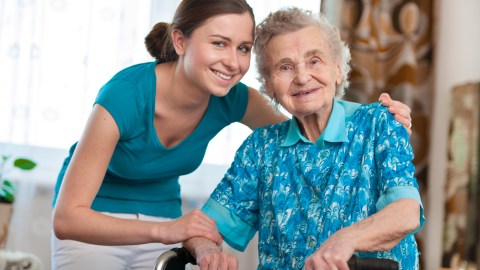What’s the New Future of Aging Services

The loudest and largest generation in history, the baby boomers, are older. Their numbers and needs will place unprecedented demands on aging services in a time of workforce shortages and budgetary constraints. So is the answer simply to expand the services we know or to ask what’s the new future of aging services?
While there is no standard definition, aging services address the full gambit of public and private support that one may need in older age. Services include housing, transportation, nutrition, home care, etc. The field is perhaps best defined by the iconic and, in many cases, lifesaving program Meals-on-Wheels. I had the honor to participate in the American Society on Aging’s General Session on the Future of Aging along with leading thinkers that included AARP’s Jo Ann Jenkins, UCLA’s Fernando Torres-Gil and moderated as well as stimulated by Ken Dykewald founder of AgeWave.
My remarks cited four dimensions of “new”. First there is a new consumer. Tomorrow’s older Americans are far more numerous than any previous generation. Moreover, they will be far more culturally diverse, likely to live alone or with only one other person, have fewer adult children and more likely to live in suburban and rural areas where the ‘logistics’ of service delivery is more challenging.
While few of us can build a computer, most have come to believe that if there is a task to be tackled, there should be “an app for that”. That attitude, combined with the availability of new technology, particularly information communications technology and robotics are likely to have the greatest near-term impact on aging services. Going well beyond those systems that simply alert emergency responders to an accident, the next generation of technology-enabled services will predict that there is likely to be an ‘event’. These might include sensors under the rug to detect a change in gait to predict a fall, sensors in the refrigerator to determine if the food is either old or has not been eaten, and countless devices and systems to monitor, manage and motivate healthy behaviors connecting the resident with family, friends and service providers.
Robotics may not resemble the images depicted in baby boomer childhood television classics, such as the Jetsons or Lost In Space, nevertheless the ‘bots’ are here and in your local big box store. For example, service bots such as those produced by iRobot to vacuum, cut the lawn or perhaps even to remind you to take your medication will become the new norm. Robotics will provide valuable services to both those who can afford them and provide a cost-effective strategy in public housing and healthcare settings where the workforce may be in short supply. But what if robots could cuddle too? Social robots are here. These include the lovable seal PARO as well as other robots being developed at MIT AgeLab and elsewhere to provide companions, gently remind you to eat, drink, exercise or to provide a playful gateway between you and a grandchild.
Technology alone is rarely innovation. Real innovation in the future of aging services will be about leveraging these technologies along with new strategic partnerships in both the public and private sectors, e.g., aging services collaborations with retailers, senior housing providers, financial services. Imagine leveraging thousands of retail in-store medical clinics to provide chronic care services via affordable and soon-to-be ubiquitous in home health stations. Perhaps the big box home improvement store could be the new location for an aging services provider who specializes in aging-in-place home modification – providing information to the consumer and driving sales in the store. And, as senior housing providers seek to evolve their business model, could they serve as a community hub providing services that go beyond their walls and into the community?
Innovation also requires new practices. The new aging services professional will be a blend of technologist, gerontologist, social worker, clinician, business person and holistic care provider. The introduction of technology as a fundamental part of aging services will result in hyper-specialization. For example, when your refrigerator, toilet and toaster begin sending information about what you’re eating, what you’re doing, and the medication you are taking, who will interpret those data? How does the next generation call center (if there is a call center) determine that everything is okay or that there is a problem requiring a knock on the door? Think of the emerging workforce that will be required to install, maintain and respond to smart home and robotic systems supporting the well-being of millions of older Americans.
But perhaps the most transformational force to invent the future of aging is the passion and verve of the aging services professionals that I met at the American Society on Aging Annual Meeting who want to make longevity about more than living longer but to live longer better.
Stay tuned, the future of aging services is about to be very new.
Image by Shutterstock




